Escaping The Catcher in the Rye-Decrypting J.D. Salinger
Last Updated on July 1, 2019 by Hamad Subani

While J.D. Salinger remains a popular literary icon, his official narrative is a case of “fill in the blanks.” Recently, a documentary was made which tried to fill in these blanks. While the documentary and its official book did indeed put greater than ever emphasis on Salinger’s role in World War II, it ended on a coy note that while Salinger’s disappearance from the writing scene after The Catcher in the Rye was unusual, he was still secretly working on more stories. The following is an attempt at decrypting J.D. Salinger based on a new interpretation of The Catcher in the Rye and new facts brought to light by the documentary (though not necessarily in agreement with it). Salinger’s role as a “counterintelligence officer” was shadowy, and he probably never ceased his intelligence related activities after World War II. This may account for his mysterious disappearance from the writing scene. Rereading The Catcher in the Rye reveals that its most memorable line is a very subtle but sharply accurate analogy of the sociopathic-kleptomaniac mindset of the Criminal Elite, who have an inexplicable tendency to “catch/protect/save/detain/control us…….for our own protection.
J.D. Salinger was born in 1919 to a wealthy father who made his fortune importing kosher cheese for the discerning Jewish community of New York. He soon expanded into supplying meats and several different types of cheese. He was later charged in a conspiracy to fix the price of “foreign type cheese” made in the United States and it appears he was putting Swiss insignia on locally made cheese (Shields & Salerno (2013). p. 33). Salinger’s family lived alongside other elite families of Manhattan. In other words, Salinger was greatly distanced from the realities of the lives of everyday Americans. While his stories tried to invent protagonists based on everyday Americans to make them more palatable, his protagonists thought and dreamt as the 1%. This of course, contributed to a WTF factor among his readers, who were startled by such atypical views. And since his readers were conceited and oblivious to the concept of an American ruling class, they interpreted his atypical views as a case of an individual genius.
Salinger went through schooling, always underperforming, until his father sent him to the Valley Forge Military Academy in 1934 to bring some structure in his life (Shields & Salerno. p. 36). In 1941, Salinger wrote a short story entitled Slight Rebellion off Madison in which the principle character Holden Caulfield experiences disaffection towards prep schools and Ivy league education, and wants to run away. The New Yorker accepted this story but publication was delayed till 1946 due to the Japanese attack on Pearl Harbour in December 1941, and America’s subsequent entry in World War II. The story had anti-establishment undertones.
Salinger was drafted into the army. When America went to war, he classified as 1-B (Shields & Salerno. p. 68), which was a designation for the crippled. This designation may have been used to protect elitists from active combat. Officially, he was assigned to the 12th Infantry Regiment, 4th Infantry Division. He was there at Utah Beach on D-Day, the Battle of the Bulge, and the Battle of Hürtgen Forest. It is important to note that unlike other soldiers, Salinger was in a counterintelligence division (Shields & Salerno. p. 26-27), which meant he had to undertake less combat activity. It also meant that unlike other soldiers who slept in dugouts and foxholes, he was sometimes accommodated in houses (Shields & Salerno. p. 132). He was involved in interrogating prisoners of war as well as in the “DeNazification” of Germany. In Europe he met with Ernest Hemingway, another literary figure associated with the elite. Hemingway was also a pioneer in a cryptic style of writing known as the iceberg theory. According to this theory, if a writer knew what he was writing about, he could omit and hide certain parts of the story, and this would make the narrative all the more intriguing and compelling. Salinger seems to have fully adopted this technique. Like atomic scientist cum Soviet spy Robert Oppenheimer, Salinger was a serious devotee of Eastern mysticism, which found its way into many of his later stories. He had even begun drinking his own urine as per their tenets (Shields & Salerno. p. 539).
24 known stories have disappeared.
Reinterpreting The Catcher in the Rye
Some people have concluded that J.D. Salinger was more like a brand, and that The Catcher in the Rye was like some kind of forced meme with no merit of its own. But there are reasons why it sold more copies than the books pedalled by Oprah. The Catcher in the Rye may have sold more than 65 million copies to date (Shields & Salerno. p. xiii). There are two things that made The Catcher in the Rye such a big success.
-
As earlier discussed, the WTF factor, which happens when a servile and domesticated working class stumbles upon the views of a member of the secret ruling class (Think Protocols of Elders of Zion). American classics, such as those produced by Mark Twain were also contemptuous of society, but they compensated with warm wit. But The Catcher in the Rye had a certain darkness in it, which made its readers all the more bewildered. While most of its readers were accustomed to structured thinking, The Catcher in the Rye had 237 appearances of the word “goddam,” 58 of “bastard”, 31 of “Chrissake” and six of “f***,” which was rather scandalous for its time.
-
Depictions of the hollowness, selfishness and phoniness of the lives of the American server class, and how their culture is in reality repressive to individualism. The American server class continues to live in a world of fakery (fake milk, fake honey, fake 911, fake moon landings, fake Jihadis, fake wars, fake enemies, fake aliens, fake boobs, fake patriotism, fake Presidential assassination, fake reality TV, fake sexuality, fake charities, fake cars, fake orgasms, fake erections, fake love, fake school shootout, fake two-party based democracy, fake food, fake grains, fruits and vegetables, fake seeds, fake sugar, fake smiles, fake manufacturing industry, fake Americans, fake free market economy, fake lives, fake Christianity, fake Freedom®, fake weather, fake education, fake conspiracy theorists etc.). But those who succumb to such drudgery of everyday life of the server class are usually smug and conceited about it. Salinger on the other hand, does not look forward to living his life as the member of the American server class. Being a member of the secret ruling elite, he belongs among those who manufacture such fakery. But attending prep school alongside members of the server class inadvertently inundates his life too with the same dose of fakery, which he views with irritation as a nuisance. It is important to note that while Holden is great at identifying phoniness and fakery, he has no hope or antidote to offer. He merely sees it as a nuisance to the operation of his schemes and plans. In The Catcher in the Rye, we learn that Holden hates Hollywood for its fakery, even though his brother D.B. had made it big in Hollywood. But in his real life Salinger did love movies, in particular, The 39 Steps, which is a movie on an espionage operation. Salinger was an excellent judge at fakery because he belonged to the class that produced it. In other words, It takes one to know one. According to one critic Seymour Krim, even Salinger’s writings had a hidden film quality to them. To quote, “Salinger’s stories read like slow-motion close-up movies instead of conventional fiction because the flair of theatre is in his bones (Shields & Salerno. p. 367).”
-
The fact that the The Catcher in the Rye was a very personal life story of Salinger. Later stories of Salinger would all be iterations of The Catcher in the Rye. And since Salinger got to live only one life, he could not replicate it’s success, no matter how hard he tried. The Catcher in the Rye turned out to be a one-trick pony. A fellow writer Leila Hadley confirmed that Salinger referred to Holden as a real person (Shields & Salerno p. 259). Later, Salinger would be in complete denial that the story was autobiographical. To quote, “There is absolutely no autobiography in my stories” (Shields & Salerno. p. 97). It was almost as if he was hiding something. He thought people were over-analyzing his work, and had he known, he would have never written it (Shields & Salerno p. 97, 101). His later stories were superficial in comparison. On his later stories, Howard Harper wrote: “Salinger’s skilful use of concrete details creates a certain reality in the Glass stories, but it is a surface reality. Beneath it is an essentially misanthropic view of life, in which the Glasses hold a monopoly on goodness, sensitivity, intelligence and so on (Shields & Salerno. p. 369).”
If we are to interpret the The Catcher in the Rye as Salinger’s life story, then it most likely represents an important turning point in his life. And if The Catcher in the Rye is actually based on an earlier short story Slight Rebellion off Madison, we can assume that this turning point takes place before Salinger ships out to war. As we read earlier, Salinger’s family already belonged in the circles of the elite, but they were more or less newcomers who were still busy climbing the rungs of the ladder. The Catcher in the Rye is about The Powers That Be (represented by Mr. Antolini, a clever and intermittently homosexual teacher at New York University) finally recognising Salinger’s talents and admitting him into the hierarchy, saving him from the drudgery of the everyday life of the American server class. The homoerotic encounter that takes place with the gatekeeper Mr. Antolini, while discomforting to Salinger, unintentionally turns out to be Salinger’s “American Idol” moment, after which the gates are opened up for him. Shortly after, the real Salinger starts frequenting the Stork Club, a hangout for New York’s elite. He ships out to war, but not as an ordinary soldier. He is soon assigned to secret counterintelligence operations, which are instrumental in having the war end the way the Powers That Be wanted it to end. His pieces of fiction are accepted by the New Yorker magazine, and he is catapulted to fame as an American literary icon.
The homoerotic encounter that takes place with the gatekeeper Mr. Antolini, while discomforting to Salinger, unintentionally turns out to be Salinger’s “American Idol” moment.
It has now been revealed that legendary film-maker Stanley Kubrick produced only a few movies because he had more serious business to attend to (such as the moon landings). Salinger produced only a few works of fiction while living a secretive life as a recluse. Was he too preoccupied with some more serious business? The assassins of John Lennon (who defected from the Beatles) and actress Rebecca Schaeffer (who seemed to have stolen the thunder of traditional Hollywood icons) as well as the man involved in the attempted assassination of Ronald Reagan (who had finally given the Soviets a run for their money) all seemed to be victims of mind control. And they all had a personal connection to The Catcher in the Rye. Was Salinger involved in mind control? One fellow writer Leila Hadley Luce remarks on a sadistic trait of Salinger that “You felt he had the power to imprison someone mentally (Shields & Salerno p. 278).” What exactly was the nature of Salinger’s activities in the army? Unlike most war veterans, Salinger was strangely uptight about his reminisces of the war. Even in his stories, the war and the army are always there, but always escape detail. To quote Leila Hadley Luce,
The few photos I have seen of Jerry over the years are always clandestine-type photos. He is hidden somehow. These photos offer a glimpse at how private Jerry was. He was extremely private about his past and what he did. More than private: secretive. And I gathered this was because of the war. Because he was in counter-intelligence (Shields & Salerno p. 97, 103).

And Salinger’s counter-intelligence duties are described as:
Salinger was honourably discharged on November 22, 1945, in Frankfurt but signed a civilian contract with the Defense Department as an intelligence agent stationed at Gunzenhausen. It took significant effort to obtain Salinger’s military records; for several years we had been told they had been destroyed in a fire and then in a flood (Shields & Salerno p. 97, 172).
What exactly was the nature of Salinger’s activities in the army?
Strangely enough, Salinger had requested that his photo be removed from the book jacket of The Catcher in the Rye by its third printing (Shields & Salerno p. 97, 255). It was almost as if he did not want to be recognised.
After the war, Salinger lived as a recluse. He actually built a bunker next to his mountain cabin, where he wrote. No one else was allowed inside. He was definitely working on something, something more important than novels and short-stories. The short stories he occasionally produced became less and less appealing. One of his last works, Hapworth 16, 1924 was considered by critics to be a disaster (Shields & Salerno p. 382). This story was published in the New Yorker two months after its editor Shawn Williams (a very close friend of Salinger) was attacked by another paper (Shields & Salerno p. 382). In other words, Salinger was coming to the rescue of the New Yorker rather than churning fresh stories. He was writing something though, and Joyce Maynard who briefly lived with him noticed two thick book manuscripts, as well as some kind of safe where he kept whatever he was working on (Shields & Salerno p. 432-433). But to the outside world, he was in denial. To quote an interviewer Betty Eppes on Salinger’s life as a hermit
I asked him several times whether he was writing. He insisted each time he was. But he would not comment at all about the nature of his projects, whether they were short-stories, books, screenplays or movies. He just wouldn’t. I asked questions and he would always come back with “where did you find all of this?” [………] A couple of times he even uncrossed his arms, but never lapsed into conversation, never. I’d never encountered such intensity in a person, the way he stared. It was unnerving. He didn’t blink as much as I thought he should have. He didn’t blink at all. I was very uncomfortable with that. (Shields & Salerno p. 298).
He was writing. The question is what.
The following are some additional themes uncovered in The Catcher in the Rye, in light of new information.
Holden would prefer you don’t ask too many questions about his past, and his future
Typical of elites, Holden is careful not to divulge too many details about his past prior to his prep school years. He only wants you to see the brief period in which he was forced to rub shoulders with members of the server class, not before or after. Even what little personal details he ends up spilling in the book is regretted. In Chapter 26. he wishes he hadn’t told so many people his story.
The book also ends abruptly, with Holden being strangely optimistic about his future, but he hides the source of optimism (being recognised by gatekeeper Mr. Antolini). Any commoner who flunked through his education would have serious misgivings. Holden is a bit too conspicuous in his denial to join the army (whereas Salinger was deeply involved with it). In Chapter 18, he mentions that he would rather be shot by a firing squad than joining the army. Was Salinger trying to divert readers away from his role in army?
Sadly, the thousands of teenagers who betrayed their most formative years because of this stupid book must have realized that unlike Holden, they had no access to gatekeepers to rescue them.
Holden has a thing for Ancient Egypt

The Powers That Be have a nostalgia for ancient Egypt, a pagan civilization where they had managed to reach the apogee of a tyrannical big brother police state, where clueless citizens lay trapped for generations in a caste system that stripped them of all their rights.
In Chapter 2, we learn that Holden is very close to his school History teacher, Mr. Spencer, who was probably some kind of gatekeeper at the school he was leaving. We learn that Holden had flunked a paper on Ancient Egypt in one of Mr. Spencer’s classes.
In Chapter 25, Holden leads two children to the mummies exhibit in the New York Museum.
But New York is not ancient Egypt, and Holden is far from being a Pharaoh. Holden is clearly seeking control and power that is way beyond his present means, as his teacher warns him in Chapter 24:
“I have a feeling that you’re riding for some kind of terrible, terrible fall. . . . The whole arrangement’s designed for men who, at some time or other in their lives, were looking for something their own environment couldn’t supply them with. . . . So they gave up looking.”
It comes as no surprise that we later learn that Holden hates “organised religion” (read:Christianity and orthodox Judaism). In chapter 14 we learn of his atheism. Holden later avoids praying, even in a state of near-breakdown. In another story entitled The Laughing Man, Salinger alludes to the difficulty in destroying ideas (The Laughing Man is an idea, maybe like religion) that commoners hold dear and sacred. In another story Franny and Zooey, worshipping God is compared to shining one’s shoes for “The Fat Lady,” aka Christ. Many of Salinger’s later stories attempt to subtly supplant Eastern mysticism.
Holden hates rubbing shoulders with the Server Class, even temporarily
In Chapter 2, Mr. Spencer reminds Holden that despite his dislike for the school environment where he has to compete and rub shoulders with members of the server class, he still has to play by the rules (maybe because he isn’t still that much of an elite to forego schooling itself).

How can the hunters and the hunted live in the same pen? In prep school, Holden distinguishes himself by wearing a red hat that is used by hunters shooting deer. In Chapter 3, this is brought to his attention by his doofus roommate. To quote,
[Ackley] took another look at my hat . . . “Up home we wear a hat like that to shoot deer in, for Chrissake,” he said.
“That’s a deer shooting hat.”
“Like hell it is.” I took it off and looked at it. I sort of closed one eye, like I was taking aim at it.
“This is a people shooting hat,” I said. “I shoot people in this hat.”
He finds members of the server class dirty and unhygienic, and goes in great detail describing their lack of hygiene, which helps them be made more unacceptable as human beings.
Holden also has a completely different sense of observation and perception than the impatient members of the server class. For example, he is fascinated by the appearance/disappearance of ducks in the Central Park lagoon. But when he shares his curiosity with a cab driver (a member of the server class), the cab driver is annoyed because such observations make no sense to those who succumb to the drudgery of the of the everyday life of the American server class.
Holden also has rightfully justified grudges against schooling and education. Salinger was later quoted as saying:
“Don’t believe everything your professors say,” he would tell me. “They’re just giving you information. Get your own information on your own terms. Stay detached.” This was a theme throughout Jerry’s life-professors insisting in a pedantic way on students regurgitating knowledge. No direct experience of learning, of spontaneity, of creating (Shields & Salerno p. 233).
But Holden is till ok with preying on vulnerable girls belonging to the Server Class.
One would expect that Holden, being so critical and dismissive of the people around him, would either try changing them, or would flush the toilet and move on, shuttering them from his life. But that’s not the case. He feels he has certain entitlements to expect from them, despite the fact that America is probably the loneliest country in the world when it comes to relationships.
While Holden has become completely dismissive of the American server class around him, and mentally degrades them at every opportunity, he is still a hypocrite. He still wants the chicks. And he viciously assaults a roommate who is better at picking them up (he on the other hand is considered by chicks to be fairly obtuse). This rather tame incident of course does not mean that Holden has a propensity for violence. As we shall later see, he eschews violence when there are more heavier people involved. Since he only intends to use chicks like toilet paper, love isn’t supposed to enter the equation. But it sometimes does, and he gets bewildered when he mysteriously feels happy around a certain Jane (Salinger’s first love Oona O’Neill?).
All of his affairs are fairly short-lived, and he eventually falls back on his family (his sister) for some creepy but enduring intimacy. And all of Holden’s siblings are extraordinary children. Elitists usually never look beyond family, and sometimes intermarry to the extent of propagating genetic defects. Many of Salinger’s later novels would be based on the Glass family, which seemed to be a metaphor for his own family. It also seems that Salinger did not judge his family as harshly as he judged American society. His sister was quoted in the New York Times style pages but he never denounced her “materialism” and “superficiality” (Shields & Salerno p. 386).
Salinger’s real life seemed to echo that of Holden. He initially courted Oona O’Neill, the daughter of Eugene O’Neill, and he was quite heartbroken when she forsook him for Charlie Chaplin.
In Germany, Salinger married Sylvia Welter, a doctor and a likely Gestapo agent (Shields & Salerno p. 180- 181). Salinger was working for counterintelligence then. Did he blackmail her into marriage using his access to information? The marriage was a breach of of nonfraternization law which was in effect to prevent American soldiers from marrying German women. But Salinger got past this by forging identification papers for Sylvia which identified her as French (Shields & Salerno p. 178) and later brought her to America. But only after a few weeks with Salinger’s Jewish family, Sylvia found a plane ticket to Germany on her breakfast plate (Shields & Salerno p. 185)., and returned. One of Salinger’s short stories, A Perfect Day For Bananafish was written in 1946 immediately after his marriage ended. In it, we find this curious passage:

“Miss Carpenter. Please. I know my business,” the young man said. “You just keep your eyes open for any bananafish. This is a perfect day for bananafish.” “I don’t see any,” Sybil said. “That’s understandable. Their habits are very peculiar.” He kept pushing the float. The water was not quite up to his chest. “They lead a very tragic life,” he said. “You know what they do, Sybil?” She shook her head. “Well, they swim into a hole where there’s a lot of bananas. They’re very ordinary-looking fish when they swim in. But once they get in, they behave like pigs. Why, I’ve known some bananafish to swim into a banana hole and eat as many as seventy-eight bananas.” He edged the float and its passenger a foot closer to the horizon. “Naturally, after that they’re so fat they can’t get out of the hole again. Can’t fit through the door.”
The narrator is an adult male named Seymour, emotionally troubled because of his war experiences, and Miss Carpenter is a four or five year old stranger whom he lured to a secluded part of the beach. Does bananafish allude to his greedy penis which is clearly beyond his control? Fittingly enough, Seymour commits suicide once the incident is over, similar to the “tragic life” of the bananafish. Analyses of another story Franny and Zooey reveals allusions to secret pregnancies, obviously out of wedlock.
When Salinger was 30 years old, he befriended 14 year old Jean Miller on a beach in Florida. He played her on until she turned 18, after which he took her virginity and abandoned her. In one of Salinger’s stories entitled For Esmé – with Love and Squalor, the protagonist happens to be an intelligence officer briefing some Americans before the D-Day landings, who becomes infatuated with a 14 year old. In most of his stories, women never emotionally break, and are just there to support sensitive men like him.
In 1955, he married Claire Douglas, from whom he had two children. Claire was already married to a Christian fundamentalist, but Salinger drew her away from him using Hindu philosophy (Shields & Salerno p. 324). In this case, Salinger had to marry because he was facing competition. On the marriage certificate, he claimed that this was his first marriage, removing any trace of Sylvia (Shields & Salerno p. 324). He persuaded Claire to drop out of school, four months before her graduation (He would later persuade Joyce Maynard to drop out as well). Interestingly, in Chapter 17 of The Catcher in the Rye, Holden tries to persuade a lover to run away from society and live in a cabin with him. His domineering and kleptomaniac nature could not tolerate any other influence other than his own. His daughter with Claire, Margaret, later wrote that her mother felt that Margaret had replaced her in Salinger’s affections (Salinger, M. (2000). p. 90), although he would turn his back on his daughter too, once she was older. Salinger had isolated Claire from everyone, trying to turn her into a “virtual prisoner” (Salinger, M. (2000). p. 94-5). Claire divorced him in 1966.
In a 1955 story Raise High the Roof Beam, Carpenters, the protagonist throws a stone at the head of his sweetheart just because she was looking so beautiful. Was this an analogy of Salinger’s tendency to deliberately damage young girls?
The protagonist throws a stone at the head of his sweetheart just because she was looking so beautiful.
Then there is author Joyce Maynard, who lived with Salinger when she was 18 and he was 53. She moved in with Salinger and lived with him for nine months. Unlike others, Maynard later gave a full disclosure of her relationship, but suffered a fiery blowback from the establishment media. She fancied having a daughter with Salinger (after giving him her virginity), and Salinger suggested that the daughter’s name should be Bint. Later she learnt that it was a word which was once been used for prostitute (Shields & Salerno. p. 439). Joyce Maynard was aware of many other women who preferred to be quiet. Maynard later auctioned the letters Salinger had sent her at Sotheby’s. They were purchased by Peter Norton (of Norton Antivrus) for over $156,000 and he returned them to Salinger to prevent their further circulation (Shields & Salerno. p. 531-532). Maynard later confronted Salinger only to be told that she was to blame because she was worldly (Shields & Salerno. p. 523). A defense drawn from Salinger’s dalliance with Eastern mysticism.
Salinger once flew to London to meet a girl fan whom he had corresponded with. But after she turned out to be “ugly,” he requested that she mail him back all the letters he had sent so that he could keep them when she visited (Shields & Salerno. p. 513). But she never heard from him again. He once got “tired” of another girl fan and reported her to police, resulting in her suffering a breakdown (Shields & Salerno. p. 514).
Salinger’s last wife was a nurse who was already engaged when she met the him through letters (Maynard, J. (1998) p. 158)
Holden eschews physical violence for conspiratorial and passive-aggressive behaviour
Eventually, Holden searches for intimacy by seeking the services of the worst excuse for a human being, a prostitute. But ends up in a scuffle with the pimp, in which he discovers his fear for physical violence. While Salinger has fairly domineering views on others, he preferred passive-aggressive behaviour which can be far more deadlier. A genuine bully on the other hand would always gravitate to confrontation and physical violence. A letter Salinger wrote from Europe while at war would confirm this. To quote,
I dig my fox-holes down to a cowardly depth. Am scared stiff constantly and can’t remember ever having been a civilian (Shields & Salerno. p. 116).
And in another letter, he alludes to what he does when faced with enemy fire:
You never saw six-feet-two of muscle and typewriter ribbon get out of a jeep and into a ditch as fast as this baby can. And I don’t get out until they start bulldozing an airfield over me (Shields & Salerno. p. 116-117).
While the documentary goes to great extent to portray Salinger as shell-shocked, how could he keep typing up his stories even during combat unless he was indifferent? To quote Holden’s older brother D. B. (who is a Word War II vet) in Chapter 18 of The Catcher in the Rye:
He once told Allie and I that if he’s have to shoot anybody, he wouldn’t have known which direction to shoot in. He said the army was practically as full of bastards as the Nazis were.
Far from being shell-shocked, Salinger was seeing the war as an intermission, and was already planning his postwar future.
Holden would prefer to keep you in a museum
The elite fear and loathe change and spontaneity, and instead love predictability.
The best thing, though, in that museum was that everything always stayed right where it was.
Nobody’d move. . . . Nobody’d be different. The only thing that would be different would be you.
Being the control freak that he is, Holden is at home at the museum, where he can judge the exhibits, but the exhibits can’t judge him back. He would prefer that the people in his prep school be frozen, caged and mummified, rather than risk dealing with their unpredictability. He also hates anything that appears to be out of order, such as street graffiti.
Also note that the one thing that would be different after visiting the museum would be you, not Holden. Unlike the masses, Holden and his ilk are above change. In fact, the whole book is about Holden fretting over being forced to change his narcissistic, bipolar and passive-aggressive ways. In other words, the elites can’t be expected to change their ways, which explains the state of the world we live in.
Holden is the real danger to the kids in the rye.
The title of the book, The Catcher in the Rye, is derived from the same sentiment echoed in Chapter 22. To quote:
“I thought it was ‘If a body catch a body,'” I said. “Anyway, I keep picturing all these little kids playing some game in this big field of rye and all. Thousands of little kids, and nobody’s around–nobody big, I mean–except me. And I’m standing on the edge of some crazy cliff. What I have to do, I have to catch everybody if they start to go over the cliff–I mean if they’re running and they don’t look where they’re going I have to come out from somewhere and catch them. That’s all I’d do all day. I’d just be the catcher in the rye and all. I know it’s crazy, but that’s the only thing I’d really like to be. I know it’s crazy.”
Carefully read the order of the words, Holden has an inexplicable tendency to “catch” everybody…………….but that’s just because of a cliff which only he can see, because he is the only adult and the others can’t think for themselves. Or maybe the cliff was added as an afterthought for us readers because Salinger did not want to give away the sociopathic-kleptomaniac tendency of Holden?
In other words, we are the kids running around and Holden has a psychopathic need to assert his control over us……not because we may fall over a cliff. There may not even be a cliff. But Holden invents the cliff to distract from the real danger to the kids, which is himself. This is typical of how police states and tyrannies assert their control over free people by claiming to protect them from terrorism, foreign aggression and environmental disasters, while being the real enemies of their people.
Once the catcher in the rye gets hold of you, how do you escape from his clutches? Does he ever intend to let go? Or does he damage you if he cannot take you along, the way Salinger damaged several young girls?
A more detailed interpretation of this memorable literary meme can be found here on Cabal Times:
Is there really a Cliff in the Rye Field? A critical interpretation of one of the most memorable literary memes

Holden has access to Gate-Keepers
While Holden is portrayed as aloof and insular towards everybody, there are powerful people here and there with whom Holden seems to enjoy a strange connection. This is quite the opposite of the tumbleweed persona Holden is usually considered to be.
In Chapter 2, there’s Mr. Spencer, the History teacher and his wife. And then of course, there’s Mr. Antolini, the English teacher, who recognises Holden’s uniqueness (and presumably admits him into the hierarchy).
Conclusion
In light of new revelations, there are two big questions regarding Salinger. And sadly, both of them remain unanswered. The first is, what exactly were Salinger’s activities as a counterintelligence officer in Europe during and after World War II? The second is, what exactly was Salinger doing under the cover of being a recluse?
While it may be a lot of time before the answers emerge (if they ever emerge), it is important to understand that Salinger’s/Holden’s relationship with the American Server class typifies the relationship between the Powers That Be and the American people. It is not the classic predator/prey relationship. The American people cannot be characterized as prey for the Criminal Elite. Rather, we see a willingness to surrogate to those who play them the best. Both parties need each other, and its more of a symbiotic relationship. This is probably what Hunter S. Thompson meant when he said that America was becoming a nation of “dancers.”
Who would need the services of The Catcher in the Rye?
The most memorable line in The Catcher in the Rye is a very subtle but sharply accurate analogy of the sociopathic mindset of the Criminal Elite, who have an uncontrollable urge to exert control over other people based on an inherent sense of superiority and exclusivity. Rather than clinically examine their sociopathic tendencies and megalomania, they convince us that without them, we may fall over some “cliff.” Even if there was no cliff in the first place. But there has to be cliff/danger lurking out there, and we must be oblivious of it, otherwise who would need the services of The Catcher in the Rye?
References
- David Shields and Shane Salerno (2013). Salinger. New York: Simon and Schuster.
- Maynard, Joyce (1998). At Home in the World. New York: Picador.
- Salinger, Margaret (2000). Dream Catcher: A Memoir. New York: Washington Square Press.


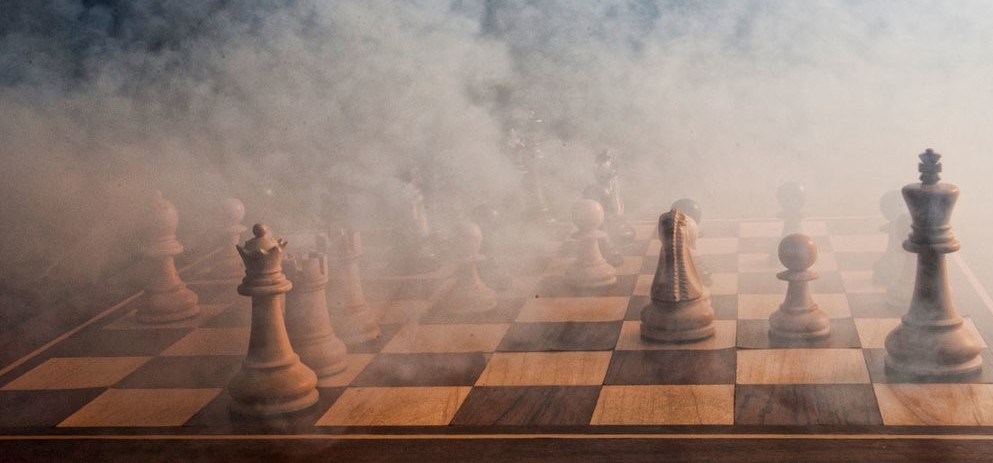


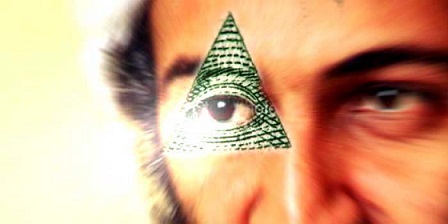

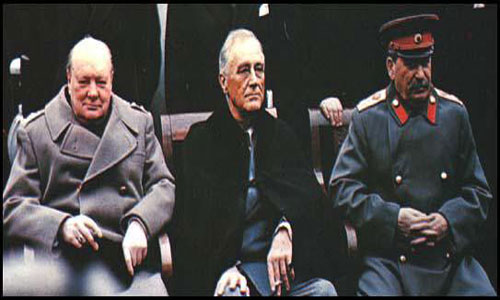

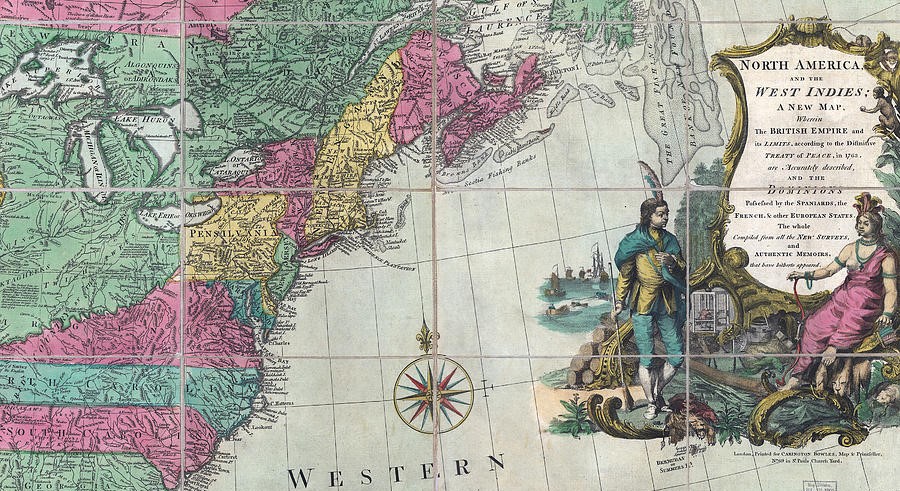
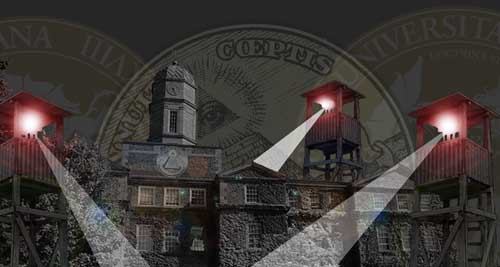



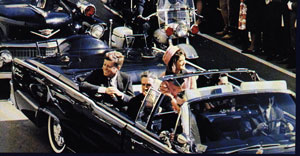

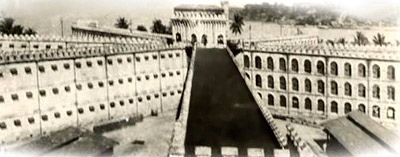








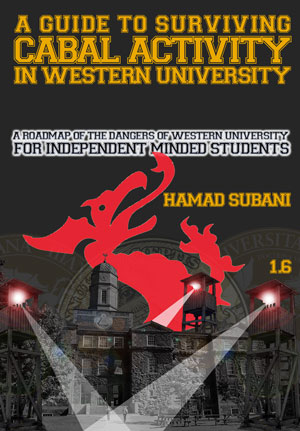


Excellent piece!
Ummm… THIS is the most important line of the book: "The thing with kids is, if they want to grab for the gold ring, you have to let them do it, and not say anything. If they fall off, they fall off, but it's bad if you say anything to them." At the end he learns that wanting to be The Catcher is idealistic nonsense, that any tendency towards sociopathic kleptomania is misguided psychopathy propagated by "perverts" like Mr. Antolini, and the best solution is to let fate take its course. You need to do better to persuade your audience… leaving out the single most crucial line of the book makes you look like you're grasping for straws, which is unfortunate.
@Phoebe You have a good point however the majority of the novel accurately demonstrates his ‘sociopathic kleptomania misguided psychopathy’.
I don’t feel that a single line is enough to outweigh the overall body of evidence